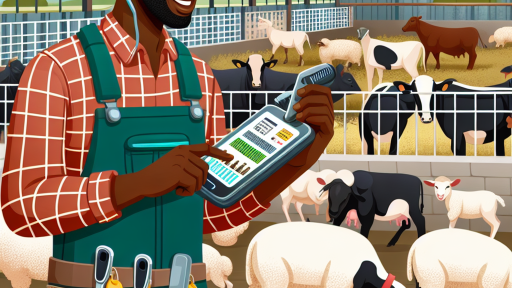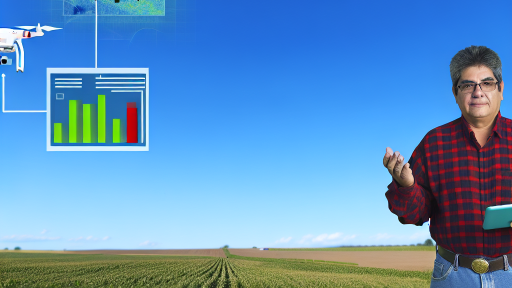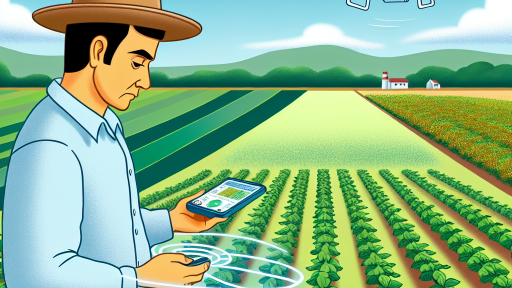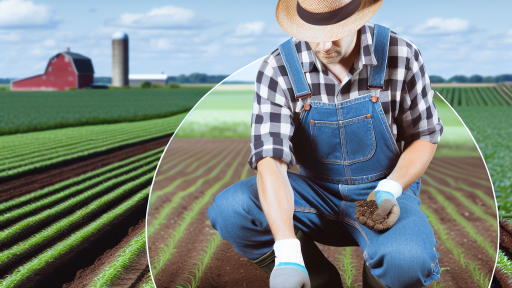Introduction to Automated Machinery in Agriculture
Agriculture has entered a new era with automated machinery.
This technology revolutionizes farming practices globally.
Farmers can now enhance productivity significantly.
Moreover, automated machinery reduces human labor requirements.
Consequently, it allows farmers to focus on strategic tasks.
Types of Automated Machinery
Various types of automated machinery have emerged in farming.
Tractors equipped with GPS technology streamline fieldwork.
Additionally, drones offer innovative solutions for crop monitoring.
Robotic harvesters enable efficient gathering of produce.
Overall, each type contributes uniquely to crop production.
Benefits of Automation in Farming
Automation in agriculture provides numerous benefits to farmers.
Increased efficiency leads to higher yields per acre.
This technology minimizes operational costs over time.
Furthermore, it enhances precision in planting and harvesting.
As a result, crop quality improves significantly.
Transform Your Agribusiness
Unlock your farm's potential with expert advice tailored to your needs. Get actionable steps that drive real results.
Get StartedThe Role of Data in Automated Farming
Data plays a crucial role in modern automated farming.
Farmers utilize analytics to monitor plant health.
This information allows for timely interventions.
Additionally, data-driven decisions optimize resource usage.
Ultimately, this leads to sustainable farming practices.
Challenges and Considerations
Despite its advantages, automated machinery presents challenges.
Initial costs can be substantial for some farmers.
Moreover, there is a need for technical training.
Additionally, machinery maintenance requires attention and expertise.
Farmers must weigh these factors before transitioning.
Overview of Different Types of Automated Machinery Used in Crop Production
Precision Agriculture Equipment
Precision agriculture employs advanced technologies to enhance crop production.
Farmers use GPS-guided tractors to optimize fieldwork.
These tractors ensure accurate planting and nutrient application.
Also, drones play a crucial role in monitoring crop health.
They gather aerial images to identify issues early.
Irrigation Systems
Automated irrigation systems greatly improve water efficiency.
Farmers utilize drip irrigation to deliver water directly to plant roots.
This method reduces water waste significantly.
Smart sensors further enhance irrigation management.
They adjust watering schedules based on soil moisture levels.
Harvesting Machines
Modern harvesting machines increase efficiency and reduce labor costs.
Combine harvesters can cut, thresh, and clean crops simultaneously.
This multitasking ability boosts productivity during harvest time.
Furthermore, robotic harvesters are entering the market.
Showcase Your Farming Business
Publish your professional farming services profile on our blog for a one-time fee of $200 and reach a dedicated audience of farmers and agribusiness owners.
Publish Your ProfileThey offer the potential for more delicate handling of crops.
Planting Equipment
Automated planting equipment allows for faster and precise sowing.
Seed drills help in planting seeds at optimal depths and spacing.
This precision encourages better germination rates.
Additionally, planters can incorporate various seed types simultaneously.
This capability enhances crop diversity in a single pass.
Post-Harvest Technologies
Post-harvest machinery is vital for maintaining crop quality.
Automated sorting machines identify and separate damaged fruits.
This ensures only high-quality products reach markets.
Moreover, packaging lines can operate at high speeds.
Efficient systems minimize handling and potential spoilage.
The Impact of Automated Machinery on Efficiency and Productivity
Boosting Operational Efficiency
Automated machinery streamlines agricultural processes significantly.
For instance, tractors equipped with GPS technology enhance field navigation.
This results in precise planting and reduced overlap during operations.
Farmers can therefore conserve seeds and fertilizers effectively.
Overall, the reduction in manual labor improves efficiency and saves time.
Increasing Crop Yields
Automated systems maximize crop yields through optimal resource management.
For example, irrigation systems can adjust based on weather forecasts.
This prevents overwatering and minimizes water waste.
As a result, crops receive just the right amount of moisture.
Farmers report noticeable increases in harvest quality and quantity.
Reducing Labor Costs
Implementing automation lowers labor costs for farms substantially.
With fewer workers needed for manual tasks, savings accumulate.
Moreover, machines can operate long hours without fatigue.
This availability means that critical tasks are completed promptly.
Ultimately, this shifts the financial burden away from manpower.
Enhancing Precision Agriculture
Automated machinery contributes to the rise of precision agriculture.
Sensors monitor soil conditions and crop health in real-time.
This data guides farmers in making informed decisions.
Consequently, productivity improves while minimizing input costs.
Farmers enjoy the benefits of tailoring their practices for maximum efficiency.
Gain More Insights: Smart Vertical Farming Technologies for Agriculture
Case Studies Showcasing the Benefits of Automation in Specific Crops
Automation in Wheat Production
Agricultural technology companies have revolutionized wheat farming.
By implementing automated tractors, farmers streamline planting and harvesting.
This precision reduces waste and increases overall yield.
For instance, GreenField Farms adopted GPS-guided tractors.
As a result, they reported a 20% increase in their wheat production.
Additionally, automated irrigation systems ensure consistent soil moisture.
This technology minimizes water usage and enhances crop health.
Enhancements in Corn Farming
Corn production has significantly benefited from automation.
Showcase Your Farming Business
Publish your professional farming services profile on our blog for a one-time fee of $200 and reach a dedicated audience of farmers and agribusiness owners.
Publish Your ProfileAutomated seeders improve planting accuracy, boosting germination rates.
Furthermore, drones monitor crop health in real time.
These advancements enable farmers to address issues quickly.
For example, Oak Ridge Farms utilized drones for aerial imaging.
Consequently, they identified pest infestations early.
This proactive approach saved their corn yield from significant loss.
Improving Soybean Harvests
The introduction of automated harvesting machines has transformed soybean production.
These machines work efficiently, minimizing crop damage during harvest.
Last season, Maple Hill Agronomy implemented a new harvesting system.
This resulted in a 15% increase in harvested beans.
Moreover, automation allows for more precise timing in harvests.
Farmers can monitor weather patterns and act accordingly.
Smart Farming Techniques for Fruit Crops
Fruit farming has also seen substantial growth due to automation.
Robotic pickers reduce labor costs in orchards.
Besides, automated pollination systems improve fruit set rates.
BerryHill Orchards employed robotic technology for harvesting strawberries.
This innovation not only increased efficiency but also decreased waste.
In addition, sensors in the field monitor plant health continuously.
This leads to timely interventions and better fruit quality.
Vegetable Production Innovations
Vegetable farming has embraced automation for enhanced productivity.
A variety of automated systems handle seeding and weeding.
For example, Fresh Greens Farm utilized robotic planters.
This automation improved planting speed without sacrificing accuracy.
Furthermore, data analytics assist in monitoring crop conditions.
This allows for precise fertilizer and pesticide applications.
Overall, automation creates a streamlined workflow in vegetable production.
Discover More: Understanding Automated Machinery in Agriculture
Cost Analysis
Initial Investment
Investing in automated machinery can be substantial.
Farmers often face significant upfront costs when purchasing these technologies.
These costs include equipment, installation, and training expenses.
However, taking a closer look reveals potential benefits.
Long-term Gains
Automation can greatly enhance efficiency in agricultural operations.
With machines handling repetitive tasks, labor costs may decrease over time.
Additionally, automation can lead to better crop yields.
This leads to more produce for sale and higher revenues.
Increased Profit Margins
Automated systems often reduce waste during production.
Farmers can save on resources such as water and fertilizers.
Moreover, increased efficiency translates to lower operational costs.
This ultimately contributes to elevated profit margins.
Return on Investment
A comprehensive cost analysis helps farmers assess their investment.
Showcase Your Farming Business
Publish your professional farming services profile on our blog for a one-time fee of $200 and reach a dedicated audience of farmers and agribusiness owners.
Publish Your ProfileThey can calculate the estimated time to recover initial costs.
For instance, automated machinery can boost production rates significantly.
Consequently, the return on investment can be substantial in the long run.
Real-life Examples
Many farmers have successfully adopted automation technologies.
For example, the Martinez family farm witnessed a 30% increase in crop production.
They invested in automated irrigation systems that optimized water usage.
Another case is Greenfield Farm, which implemented robotic harvesters.
This led to reduced labor costs and higher efficiency during peak season.
Discover More: Implementing GPS Technology in Precision Farming
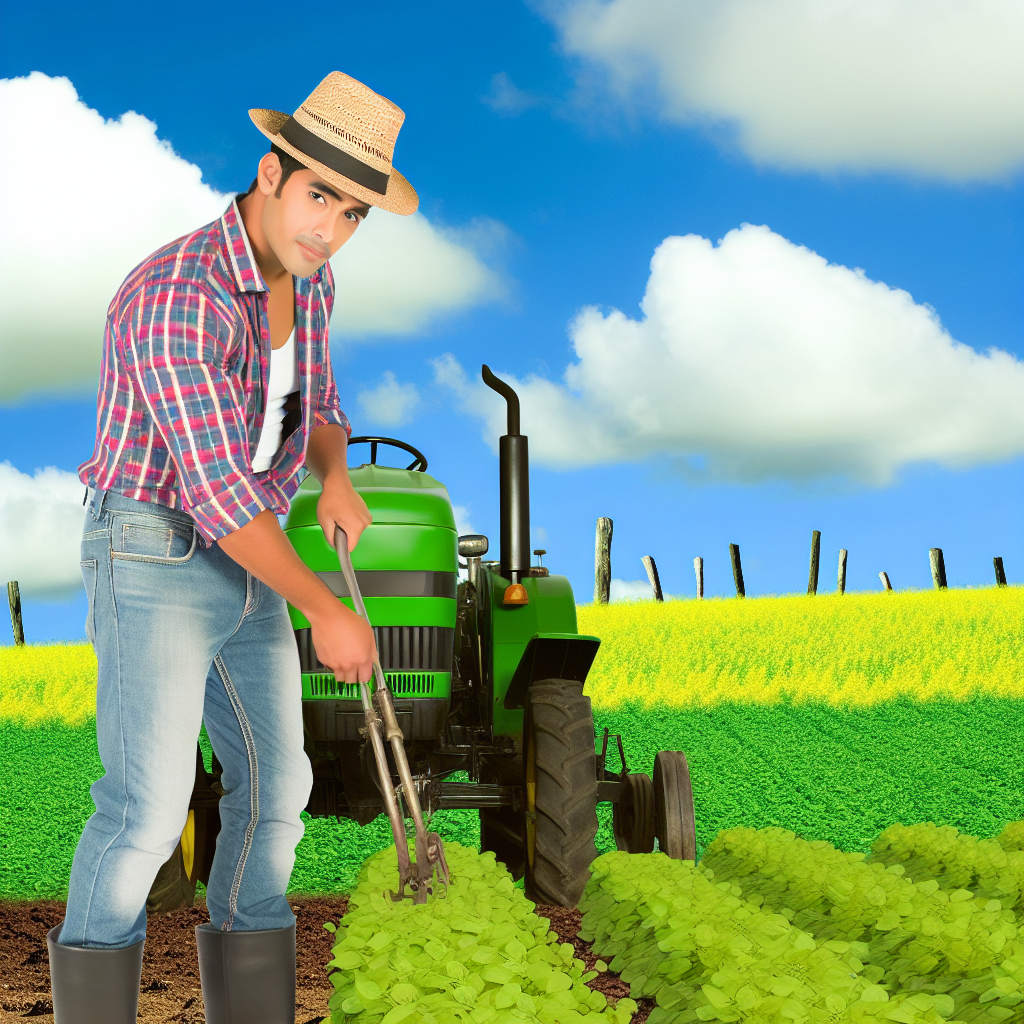
Integration of Data Analytics and IoT in Automated Farming
Understanding Data Analytics
Data analytics transforms raw agricultural data into actionable insights.
Farmers can make informed decisions based on precise information.
Advanced algorithms analyze patterns to forecast yields accurately.
Moreover, they identify potential issues before they escalate.
Role of IoT in Farming
The Internet of Things (IoT) connects various farming devices seamlessly.
Sensors collect data on soil moisture, temperature, and crop health.
This information flows into a centralized system for analysis.
Consequently, farmers can monitor their fields in real-time.
Benefits of Integration
Integrating data analytics with IoT maximizes resource efficiency.
Automated irrigation systems optimize water usage significantly.
Farmers can reduce waste by applying fertilizers based on actual need.
Additionally, predictive analytics enhances crop resilience to climate changes.
Improving Crop Management Practices
Data-driven insights enable more precise crop management strategies.
Farmers can adjust their practices based on field-specific information.
This results in better crop health and higher yields overall.
In turn, it leads to increased profitability for farmers.
Case Studies of Successful Implementation
Many farmers apply data analytics and IoT with great success.
For instance, AgriTech Innovations utilizes advanced sensors.
They successfully increased tomato yields by 30% using these technologies.
In another example, GreenFields Farm integrated data analytics.
They experienced a significant reduction in water waste and costs.
See Related Content: Benefits of Smart Irrigation for Modern Farmers
Challenges and Limitations of Implementing Automated Machinery
High Initial Costs
Investing in automated machinery requires significant capital outlay.
Small to medium-sized farms may find this challenging.
Consequently, many farmers hesitate to adopt these technologies.
Technical Expertise Requirements
Using automated machinery demands a certain level of technical knowledge.
Farmers must train their staff to handle complex systems effectively.
However, the lack of skilled labor complicates this process.
Maintenance and Repair Issues
Automated machines require regular maintenance to operate efficiently.
Furthermore, repair costs can accumulate quickly.
Farmers may struggle to find local technicians for specialized repairs.
Showcase Your Farming Business
Publish your professional farming services profile on our blog for a one-time fee of $200 and reach a dedicated audience of farmers and agribusiness owners.
Publish Your ProfileDependence on Technology
Relying heavily on automated systems can create vulnerability.
Technical failures may lead to significant crop losses.
Additionally, farmers may become disconnected from traditional farming methods.
Environmental Concerns
Automated machinery can have negative environmental impacts.
For instance, heavy machinery can compact soil and damage ecosystems.
Consequently, sustainable practices may be compromised.
Integration with Existing Systems
Incorporating new technology into existing farming operations can be complex.
Farmers must consider compatibility with their current equipment.
This challenge can deter the adoption of automated solutions.
Future Trends in Automated Machinery and Their Implications for Agriculture
Integration of AI and Machine Learning
AI significantly enhances precision in agricultural practices.
Farmers can rely on data-driven insights to optimize yields.
Machine learning algorithms predict crop diseases before they spread.
Such proactive measures save time and resources for farmers.
Autonomous Vehicles and Drones
Autonomous machinery is transforming traditional farming methods.
Drones provide real-time aerial views of crop health.
They help farmers monitor fields efficiently and effectively.
Furthermore, self-driving tractors simplify tasks like planting and harvesting.
This technology reduces labor costs significantly.
Robotics in Crop Maintenance
Robotic systems aid in delicate tasks such as weeding and pruning.
These innovations minimize human error while maximizing efficiency.
Additionally, robots can work around the clock, increasing productivity.
They often deliver consistent quality in crop care practices.
Impact on Sustainable Practices
Automated systems promote sustainable farming by reducing waste.
They optimize resource use, such as water conservation efforts.
Smart machines enable precise application of fertilizers and pesticides.
As a result, they help in minimizing environmental impacts.
Economic Implications for Farmers
Investment in automated machinery can be costly at first.
However, long-term savings and increased efficiency are significant benefits.
Farmers can achieve higher yields with reduced labor dependence.
This shift can lead to more competitive pricing in the market.
Adoption Challenges and Solutions
Many farmers face challenges when adopting advanced technologies.
Education and training are crucial to overcoming these hurdles.
Partnerships with tech companies can facilitate smooth transitions.
Government incentives may also encourage adoption among small farmers.

